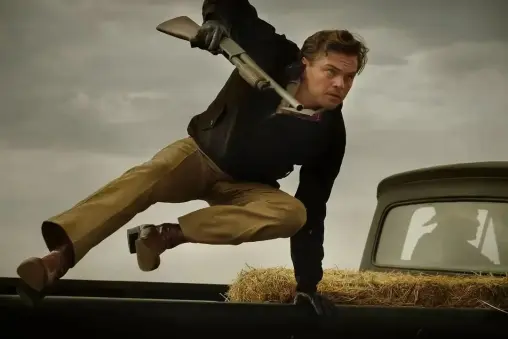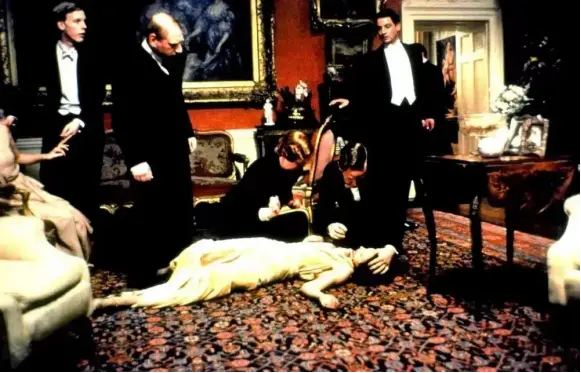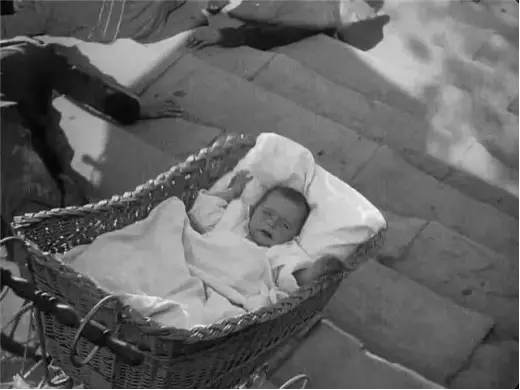Reflections on Violent Films
The prevalence of violence in movies is not solely due to the likes of Scorsese, Peckinpah, and Tarantino, nor is it because of Hitchcock, Spike Lee, or Catherine Bigelow. Quentin Tarantino reflects on violent films from both an aesthetic and narrative perspective in his book, "Cinema Speculation." At the age of nine, Tarantino was taken to see the disturbing black crime thriller "Melinda" (1972), and his mother Connie, who had concerns about the violence, warned him: "Well, Quentin, this movie is too violent. It's not that I'm confused by the movie, but you won't understand the story. So if you don't know the background of the violence, you'll only watch it for the violence. I don't want you to do that."
Connie pointed out a crucial point: the context of violence is crucial when it comes to violent scenes on the screen. The sight of the great white shark lurking in the ocean is enough to make one shudder, but if the audience sees the motive behind the violence, they will accept the brutal scenes. Tarantino wrote about his childhood movie experiences: "I could take the violence because I understood the story." In fact, he felt more emotional watching Disney's "Bambi," where the mother deer died, than watching the most extreme violent films at the time.

When asked by a reporter whether he, as a child, had been stopped by a ticket collector from watching horror crime films, Tarantino replied: "Never. They're all R-rated films (restricted, requiring viewers under the age of 17 to be accompanied by an adult). There's nothing X-rated (i.e. NC-17, not suitable for viewers under the age of 17). Your parents can take you to an R-rated movie. That's the point of having an R rating."
In the documentary "This Film is Not Yet Rated" (2006) by American director Kirby Dick, it was mentioned that members of the American film rating committee often find themselves confused when it comes to screen violence. When a film involves sex, especially when the scenes depict homosexuals, they are more likely to rate the film as NC-17. "King of Bad Taste," American comedy director John Waters, said in Dick's documentary, "Violence is a good thing, sex isn't."
Tarantino dropped out of school at the age of 15 and worked as a projectionist at a pornographic movie theater, selling video tapes at a record store during his time hanging out in the streets. He watched every movie in the store and became an undisputed movie knowledge king, accumulating an astonishing amount of movie and reading material. He believes the entire 1970s was the greatest era of American cinema and turned this view into his movie, "Once Upon a Time in Hollywood."

A reporter once asked Tarantino, "Were you ever stopped from seeing horror or crime movies when you were a kid?" Tarantino replied, "Never. They were all R-rated films (restricted, meaning viewers under 17 require adult accompaniment). There's nothing that's X-rated (NC-17, not suitable for viewers under 17). Your parents can bring you to see an R-rated movie. That's what the R-rating is for."
In Kirby Dick's documentary "This Film is Not Yet Rated" (2006), an American film rating board member was found to be particularly confused by on-screen violence. When a movie involves sex, especially if it depicts same-sex scenes, they are more likely to rate it NC-17. "King of Bad Taste" and American comedy film director John Waters said in the documentary, "Violence is a good thing; sex is not."
Quentin Tarantino dropped out of school at 15 and worked as a projectionist at a pornographic cinema in his early years. He also sold videotapes at a record store. He watched every film in the store and became undoubtedly the film connoisseur of the record store, accumulating an astonishing amount of knowledge and reading. He believed that the entire 1970s was the greatest era in American film history, and he made a movie, "Once Upon a Time in Hollywood," based on this perspective.
In his book, Quentin Tarantino analyzes the reasons behind the portrayal of violence in American movies during the 1970s. During that time, any depiction of violence was accepted and even encouraged, leading to the creation of numerous great films. However, in the 1980s, movies started to prioritize being "likable" and not offending anyone, resulting in contrived and restrained films. As the author puts it, "if you really made a movie about an asshole, you can bet that the asshole will have a moment of redemption in the last 20 minutes."
Quentin Tarantino's movies are all disguised as crazy, bloody parties for light entertainment. He understands that audiences are tired of movies that only depict the suffering of slaves or massacres. They want victims to become "victors and avengers," seeking revenge through violent actions. On-screen aesthetic violence is a form of "catharsis" that is "beneficial to the soul" and can satisfy moral fantasies where good people are rewarded and bad people are punished. The more brutal the revenge, the more satisfying it is. Nobody wants to be Bambi, having their mother killed without any form of retaliation.
Some filmmakers are shocked and confused by the level of violence on screen. Julian Fellowes, the creator of "Downton Abbey," said in an interview, "most of us don't experience violence in our lives. I'm not saying you've never witnessed violence, but it's very rare. I may have seen two real fights in my life, but I can watch six fight scenes in a movie at night, and I don't understand the logic." In Fellowes' works, it's unlikely to see maids and butlers getting beaten up in the kitchen or scenes of duchesses being beheaded. He prefers to depict nostalgic, romantic dreams in his TV shows and films, even in his murder mystery "Gosford Park," where the victim dies cleanly without much bloodshed when the knife stabs into their chest.

Attempts by creators to explore moral gray areas and challenge implicit violence have all given way to Hollywood-style happy endings. Most movies in the 80s had a big, happy ending, and you could tell from the beginning what the ending would be. They all repeated the same phrase: "Everything will be okay," just like Bill Murray's character in Groundhog Day, where every day is February 2nd. Of course, they can't compare to the movies of the 70s. In these movies, you don't see the climax at the end of Peckinpah's Straw Dogs (1971), where the quiet and reserved academic, Dustin Hoffman's character, finally takes up arms against the villagers who have been bullying him. Nor can you have the singing of "Singing in the Rain" while committing acts of violence and the husband of the victim being mocked and humiliated, as in Kubrick's A Clockwork Orange (1971).
In Sergei Eisenstein's Battleship Potemkin (1925), a runaway baby carriage tumbles down the steps next to a dead body lying on the Odessa Steps. In William Wellman's The Public Enemy (1931), James Cagney's character smashes half an orange into his girlfriend's face. Hitchcock had Janet Leigh stabbed to death in the shower by a lunatic with a knife in Psycho (1960), causing a shower murder to become prevalent for over 60 years. Even in 2022's new film The Mourning Witch of Inisheerlin, Martin McDonagh still cuts off the protagonist's fingers and uses the disgusting severed fingers to imply the character's resolve. These unforgettable bloody scenes in the history of film and in the memories of audiences guarantee the artistic integrity of the films.

When Quentin Tarantino was making "Inglourious Basterds," he brought on a collaborator named Eli Roth. Roth's debut horror film was "Cabin Fever" in 2002, which takes place in a forest cabin and features several scenes of bodies being corroded by a virus. In contrast, Mel Gibson's 2004 film "The Passion of the Christ" features the sounds of Roman hammers nailing Jesus to the cross, his body covered in whip marks and bleeding from the nail holes, with blood dripping into the soil. The pain seems to have soaked into the blood for 2,000 years.
This is a paradox. Screen violence is fictional, but it is also criticized as mindless, exploitative of the audience's interests, and using sex and violence to stimulate their desires and incite potential imitators. Feross is right that violence rarely intersects with most people's lives. However, since the invention of film, the most vivid and memorable moments on screen, which are also the most likely to be cherished by the audience, are based on brutal acts of violence.
The first part of the article:
https://www.peliplat.com/en/article/10003099









Share your thoughts!
Be the first to start the conversation.